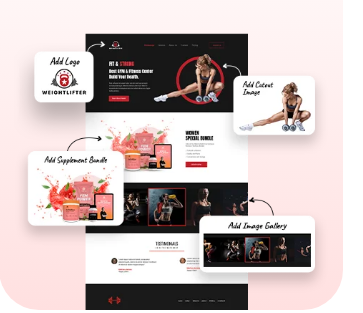A visually appealing website is no longer enough to stand out in today’s digital landscape. Your online visibility—how easily your audience can discover your site—sets you apart from the competition. Strategic web design blends visual aesthetics with functionality to ensure your website not only looks great but also drives traffic and enhances user experience.
This post dives into how strategic Web design can improve your online visibility and give your business a competitive edge.
Why Strategic Web Design Matters
Your website is often the first interaction customers have with your brand. A well-crafted website has the power to make or break that first impression, but it must do more than just look good. Strategic design focuses on usability, search engine optimization (SEO), and user engagement to draw in more visitors and keep them exploring your content.
Here’s how it works.
1. Enhancing User Experience (UX)
Visitors are more likely to stay on your site if it’s easy to use and visually pleasing. A seamless user experience ensures potential customers can quickly find what they’re looking for—whether it’s information about your services, contact details, or a checkout page.
Benefits:
Reduced Bounce Rates: A user-friendly site encourages visitors to spend more time exploring, which lowers bounce rates.
Higher Conversions: Clear navigation and intuitive design can guide users toward calls-to-action (like signing up or making a purchase).
Positive Brand Perception: A well-designed website conveys professionalism and trustworthiness.
For example, responsive navigation menus and strategically placed buttons can make all the difference in keeping users engaged.
2. SEO-Focused Design
Strategic web design doesn’t just please users; it also caters to search engines. Your website’s structure, speed, and mobile-friendliness directly impact your ranking on search engine results pages (SERPs).
Benefits:
Boosted Search Rankings: Search engines prioritize sites that are optimized for speed and mobile devices.
Improved Discoverability: An SEO-friendly design ensures your pages are indexed properly, making it easier for users to find your content.
Keyword Integration: SEO-focused designs often include strategically placed headings, alt tags, and metadata optimized for keywords—and this directly boosts visibility.
For instance, a site optimized for fast load speeds (under three seconds) satisfies Google’s ranking algorithms while providing a better experience for users.
3. Mobile-Responsive Design
With mobile devices accounting for over 60% of global website traffic, having a mobile-responsive design is no longer optional—it’s critical. A responsive site adapts to any screen size, ensuring a smooth user experience whether someone is browsing on a phone, tablet, or desktop.
Benefits:
Wider Audience Reach: A mobile-responsive website makes your brand accessible to users on any device.
SEO Compatibility: Google prioritizes mobile-friendly websites in its rankings, giving you yet another reason to go responsive.
Better Usability: Creating a seamless on-the-go experience helps retain visitors who primarily browse using mobile devices.
4. Engaging Visuals and Content Delivery
Content matters, but delivery is key. Strategic web design ensures that your content doesn’t just exist but is displayed in a way that grabs attention. From high-quality images and videos to crisp typography, good design amplifies your message.
Benefits:
Stronger Engagement: Users are more likely to scroll, click, and interact when your visuals complement your content.
Better Storytelling: Engaging designs guide users through your content in a logical, visually appealing flow.



